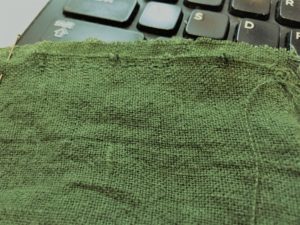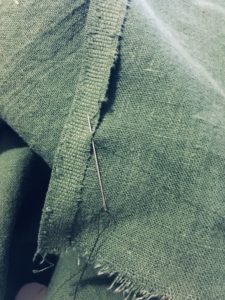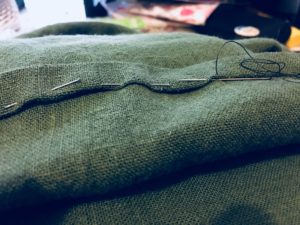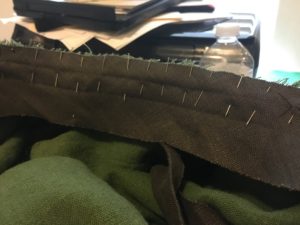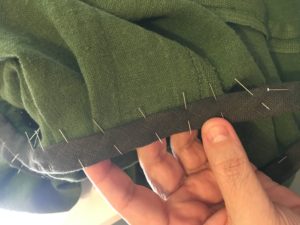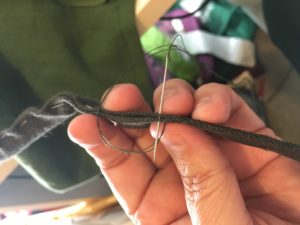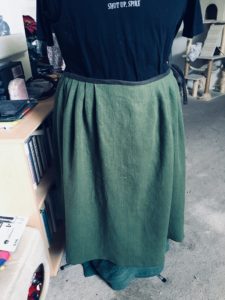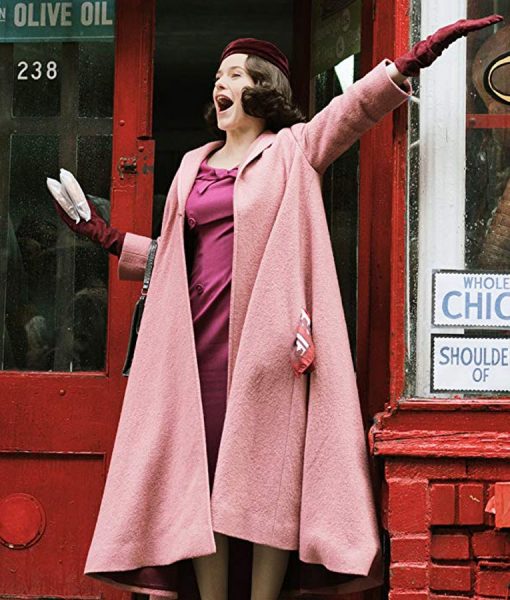
As I stated in my introduction to the Gingham suit project, which somewhat ironical will get finished after this project, every fan of Amazon’s The Marvelous Mrs. Maisel has their favorite outfit or two from each of the three seasons. Most get added to the bucket list, some get made as close to screen accurate as possible, and some become inspirations for a variation on the theme, but everyone has a favorite. Mine is the black and white gingham shorts suit. My second favorite is her iconic pink wool swing coat.
What’s not to love about a flowing winter coat that comes down past your knees that just happens to be your favorite color, right? Let’s review the coat and the pattern from which it’s going to be recreated.
I am extremely grateful that the Simplicity Pattern Company has chosen to revive some of their vintage patterns. It makes it easier to make something with a solid base to start from than having to cobble two or three patterns together to come with something. Simplicity’s 8509 “Misses Vintage Lined Coat…” fits the bill to a tee. It even has an option to add pockets, which I’m going to do because a girl needs her pockets. Where else are you going to tuck your silk scarf and gloves? [Yes, yes, I realize that Midge would have put her gloves in her handbag, but I enough stuff in my bag already and the coat pocket is the only place that I can put my gloves and have them when and where I need them.]
So what are the challenges that I am facing with this project?
- Grading the pattern up four sizes. Unfortunately, I am overweight, very overweight, and most store-bought patterns are not large enough for me.
- Making a toile or muslin. I hate, hate, hate spending the time having to make a fitting garment to prove that my rusty grading skills are still on the money.
- Limited fabric and no place for muck-ups. I got my beautiful and luxurious cashmere and wool blend soft rosy pink coating on sale for 70 percent off, once it’s cut, it’s cut and there won’t be anymore. It’s not that I couldn’t find a comparable fabric, but this particular fabric has been sold out. Thus, my need to make a muslin…
- Bound buttonholes. I tried to make these years, no decades ago, and worse on bonded polyester double knit, which the masses now know as “scuba knit.” I was a disaster and the vest that I was making out of scarps from a jumper that my mom made never saw the light of day.
- Keeping my swearing down to a minimum. I bought polyester bridal satin for the lining. This stuff unravels as you work with it and I forgot to buy a bottle of Fray Check. As a side note, I chose to not line the coat with the same raspberry colored lining as the original one from the show as I wanted something that would go with more than pink would. Also, it was the only thing that Joann’s had that even came close to the same color family as the main fabric color albeit it about three or four shades lighter.
Next post: Making the muslin fitting.
